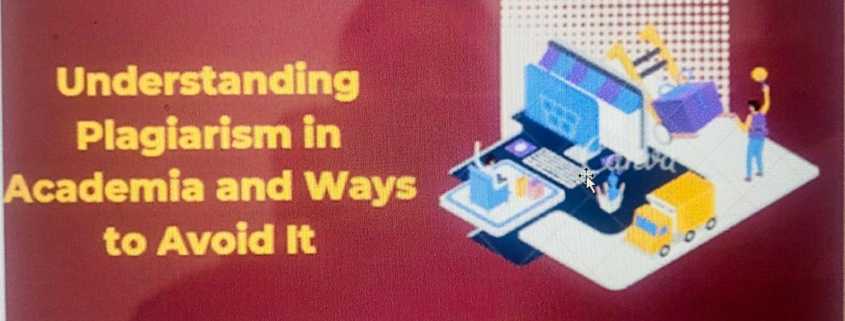
Understanding Plagiarism in Academia & ways to Avoid it
Plagiarism is a form of academic dishonesty, and it is taken very seriously. In most academic institutions, plagiarism is considered a form of cheating and can result in serious consequences, such as failing a course or even expulsion.
In some cases, plagiarism may even be a criminal offense, depending on the extent of the plagiarism and the country in which it takes place.
In this article, we are going to discuss what plagiarism is and its role in academics. So, let’s get started!
What is Plagiarism?
Plagiarism is the act of copying another’s work and presenting it as your own. Plagiarism exists in many forms. Some common types of plagiarism include:
- Patchwork plagiarism
- Direct plagiarism
- Source-based plagiarism
For more information about the types of plagiarism, you can check out this explanation.
Role of Plagiarism in Academics:
Institutions
In academia, plagiarism is a serious problem. Schools and universities have strict policies in place to discourage plagiarism and to punish those who are found guilty. It may result in academic probation, suspension, or even expulsion. It can also damage a student’s reputation and make it difficult to find employment or get accepted into graduate school.
Effect on Students
Plagiarism can also have a negative effect on the quality of academic work. When students copy the work of others, they are not engaging with the material and developing their own critical thinking skills. This can lead to inferior papers and presentations, as well as missed opportunities for learning.
In the Professional Field
For professors and other professionals, plagiarism can also be damaging. Plagiarism can hurt their credibility and reputation in their field, and it can lead to legal action. When professors are aware of plagiarism, they can take steps to protect themselves, such as requiring students to use plagiarism-detection software.
Ultimately, it is up to each student and professional to understand the consequences of plagiarism and to ensure that their work is original and properly cited. Plagiarism is a serious issue that can have lasting repercussions. By understanding its role in academics, students and professionals can take the necessary steps to ensure that their work is original and of the highest quality.
How to Avoid Plagiarism in Academics
In order to avoid plagiarism in academics, there are a few things that students can do.
1. Don’t delay your research and assignments
It is important to ensure that you complete your research and assignments on time to avoid any potential plagiarism.
Starting research and assignments early also allows students to prepare properly for the task. Taking the time to thoroughly research a topic, read through sources, and make notes will help students understand and develop their own ideas. This is important to ensure that the content they create is relevant and original.
On the other hand, delaying your research and assignments can easily lead to plagiarism. When you are running out of time, you might be tempted to copy the work of others without giving it the necessary credit.
Some things that you can keep in mind to keep on top of your research include:
- Understanding the deadlines and instructions
- Making a plan beforehand
- Setting your schedule for research
- Finding and separating resources
2. Be Careful about Not Using Anyone Else’s Words
While this may sound obvious, its nice tip that you can keep in mind to avoid plagiarism. When you want to start with your write-up, don’t use the words and sentences written on the source material verbatim. This is something that a lot of people can do without being aware of it, and it can lead to plagiarism issues later on.
3. Be Careful in Tracking Your Sources
As we mentioned in the introductory part of this post, one of main types of plagiarism is source-based plagiarism. As the name indicates, this type of plagiarism occurs when someone cites the wrong source or if they cite the correct source improperly.
In order to avoid committing this type of plagiarism, you have to be careful about keeping track of the sources that you take help from. If you are scrupulous in this regard, you won’t have to face any issues when it comes to compiling the references later on.
4. Use Plagiarism Checkers online:
Of course, you won’t realize if you’ve committed plagiarism in your academic paper unless you check it using a proper tool. This tip is not exactly a measure of avoiding plagiarism. Rather it is for finding out if you have committed any during the course of your work. After taking this step, you can take care of the plagiarism and make your submission wholly unique. This is, in that sense, a way to avoid getting plagiarism in your academic content.
When you want to check for plagiarism in your paper, you have to make sure that you pick the right tool for the job. Banking on an unreliable tool can be unwise since it may fail to find a significant portion of plagiarized text in your paper.
While you’re free to make your own pick, some good tools (free and paid) that you can use for finding plagiarism in your papers include:
Here is what a normal plagiarism report looks like. We’re using Prepostseo for this example:
Final Verdict:
Plagiarism is a serious form of academic dishonesty that can have serious consequences. It is important to understand what plagiarism is and how to avoid it. Students should always cite their sources and give credit where it is due.
Cyber Crime Education: Prevention is Better than Cure Summarised
Points to consider before buying insurance in India
Benefits of Obtaining a Cisco Certification


